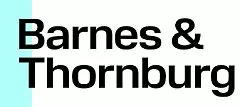- within Intellectual Property topic(s)
- in European Union
- in European Union
- in European Union
- with readers working within the Pharmaceuticals & BioTech industries
- within Intellectual Property, Privacy and Insurance topic(s)
The Patent Eligibility Restoration Act of 2025 (PERA) was introduced in both chambers on May 1, 2025, with companion bills filed in the Senate (S.1546) and the House (H.R. 3152). PERA aims to clarify and reform the criteria for patentable inventions in the United States by statutorily narrowing the scope of judicially created exceptions to patent eligibility. The Senate IP Subcommittee hearing is scheduled for October 8, 2025.
The timing of this week's hearing aligns with the first six weeks of actions and statements made by John Squires since he was sworn in as the new USPTO Director on September 22. Specifically, his pronouncements to reverse the erosion of protections for innovation-driven industries — ranging from life sciences to financial services and materials engineering — reflect the objectives of PERA.
"From crypto and AI to quantum computing and diagnostics, the marketplace is filled with breathtaking opportunities for invention and investment. Who knows what tomorrow will bring? What I do know is that the patents I signed today represent applied and patent-eligible technologies driving the frontiers of knowledge."
One of Director Squires's first acts was to sign two patents that would have been considered for rejection under section 101. One of these patents, which relates to cancer diagnostics, has renewed hope within the biotech industry, as such claims had been deemed unpatentable under section 101 for over twelve years. We maintain this optimism as the IP Subcommittee hearing is set to proceed this week despite the government shutdown.
Could 2025 finally be the turning point for restoring patent coverage for innovations in cutting-edge technologies such as biotechnology and medical diagnostics? In 2022, I echoed concerns from the life sciences industry due to Supreme Court opinions (beginning with a 2006 dissent by Justice Souter), which have continued to cause uncertainty and reduced incentives for innovation in the US over the past twenty years.
Director Squires's recent statements have been welcomed
across industries that rely on IP protection to incentivize
innovation. Aligning the patent laws with this approach should help
restore the necessary levels of investment in research, paving the
way for breakthroughs in treatments and diagnostics as we progress
toward tomorrow.
To read my 2022 article, you can click the link below.
A Brief History of Supreme Court Interest in
Patent-Eligible Subject Matter Under 35 U.S.C. § 101
By John W. Cox and Joseph L. Vandegrift, Published on 06/02/22
The content of this article is intended to provide a general guide to the subject matter. Specialist advice should be sought about your specific circumstances.


